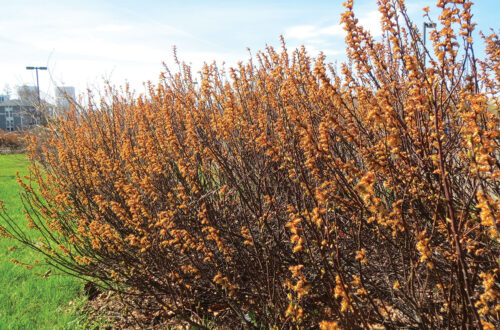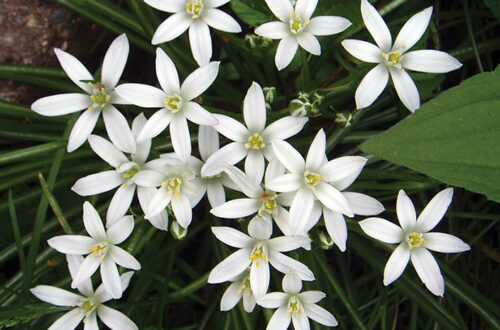By Will Rowlands
We have a new problem plant in Fairfield but we can’t call it invasive because it’s a native! The culprit is Smilax rotundifolia, commonly known as roundleaf greenbrier or common greenbrier.
Arthur Haines in Flora Novae Angliae says it’s found all over New England, except Vermont. It grows in dry-mesic or mesic forests, woodlands, fields and pond borders. It’s also found along the moist edges of swampy woods, in Christmas tree plantations and orchards.
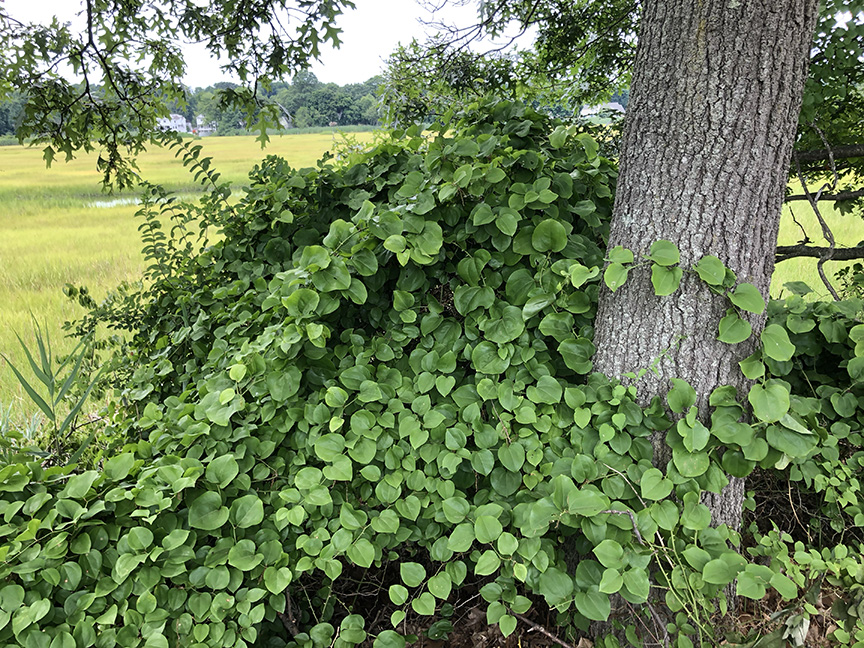
Greenbrier climbing plants, shrubs and trees along a marsh in Fairfield.
It may be a native but Teri Dunn Chace includes it her book, How to Eradicate Invasive Plants. It’s also included in Weeds of the Northeast by Richard Uva et al.
“Its pliable green stems, laden with stout thorns, are like flexible rolls of green barbed wire,” says Chace.
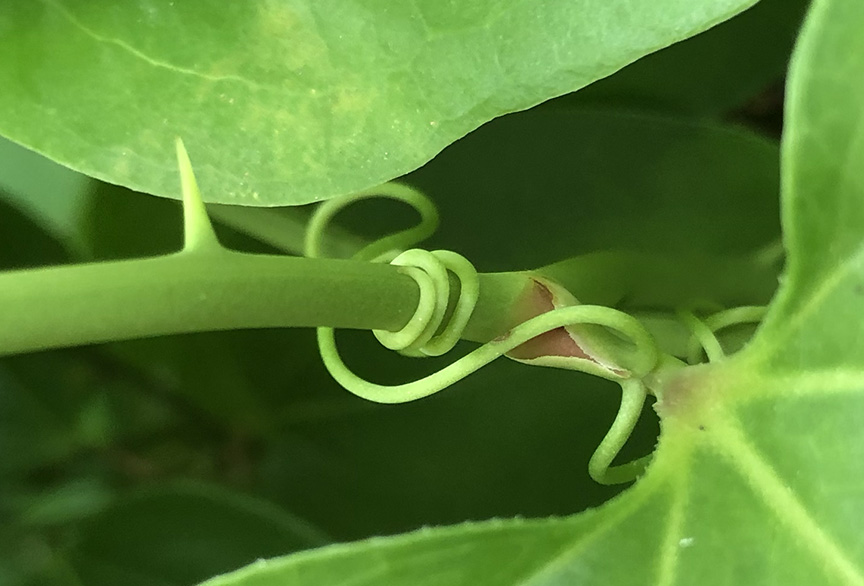
Greenbrier climbing plants, shrubs and trees along a marsh in Fairfield.
GoBotany (gobotany.nativeplanttrust.org) says it has been recommended as a planting to suppress other plants in power cuts but you don’t really want this joker in your yard.
Although it provides shelter and berries for birds, rabbits, deer and other animals, it also drapes over trees and shrubs shading out any desirable plants underneath. The plant uses tendrils to climb up to 20 feet or more, forming dense impenetrable thickets.
The seeds, which are dispersed by small mammals and birds, can remain dormant in the ground for years until triggered by sunlight. The rambling stems can reach up to 15 feet long and it can also spread via underground rhizomes.
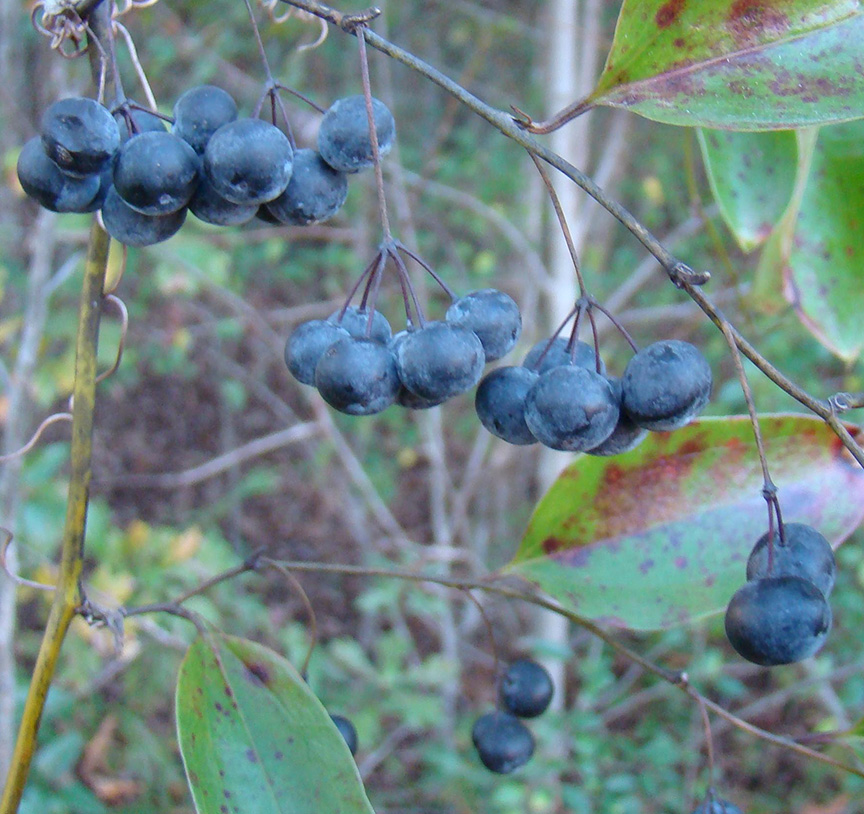
The blue-black berries usually appear in September and can persist through winter.
Identification
Greenbrier is a woody, perennial vine with sharp prickles. It’s a liana
(a woody plant with a vine-like habit).
The rounded or heart-shaped leaves are 2-5 inches long and wide. The leaves have 3-5 primary veins and are arranged alternately. Coiling tendrils, used for climbing, emerge from petioles.
Tiny greenish-white flowers can be found from April through August. Up to 20 flowers are held in umbels.
Blue-black berries appear in September and may persist through the winter. The quarter- to half-inch berries each contain 1-3 hard seeds.
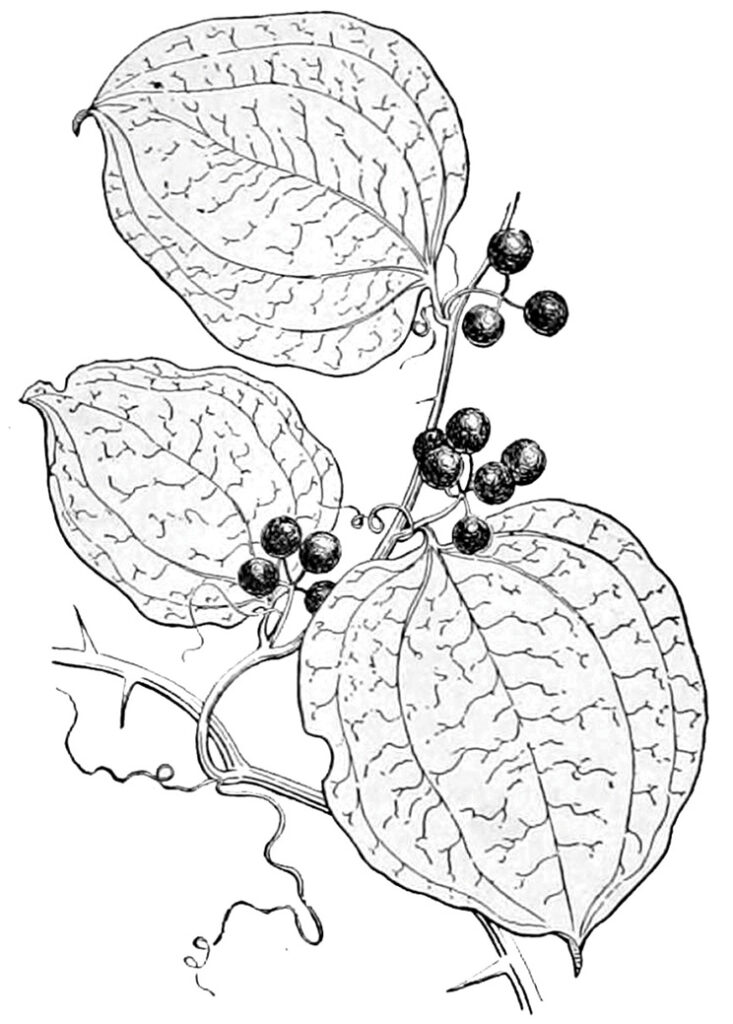
Control
Take out young plants, including the roots.
• Repeated cutting or mowing will eventually starve the plant but may take years.
• Apply glyphosate or triclopyr to cut stems. (Follow label instructions.)
• Removal of thickets can be a real problem. The thorned stems can grab arms and legs and cause real damage.
• The plant responds to fire with vigorous vegetative growth.


